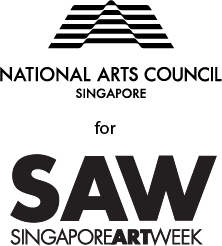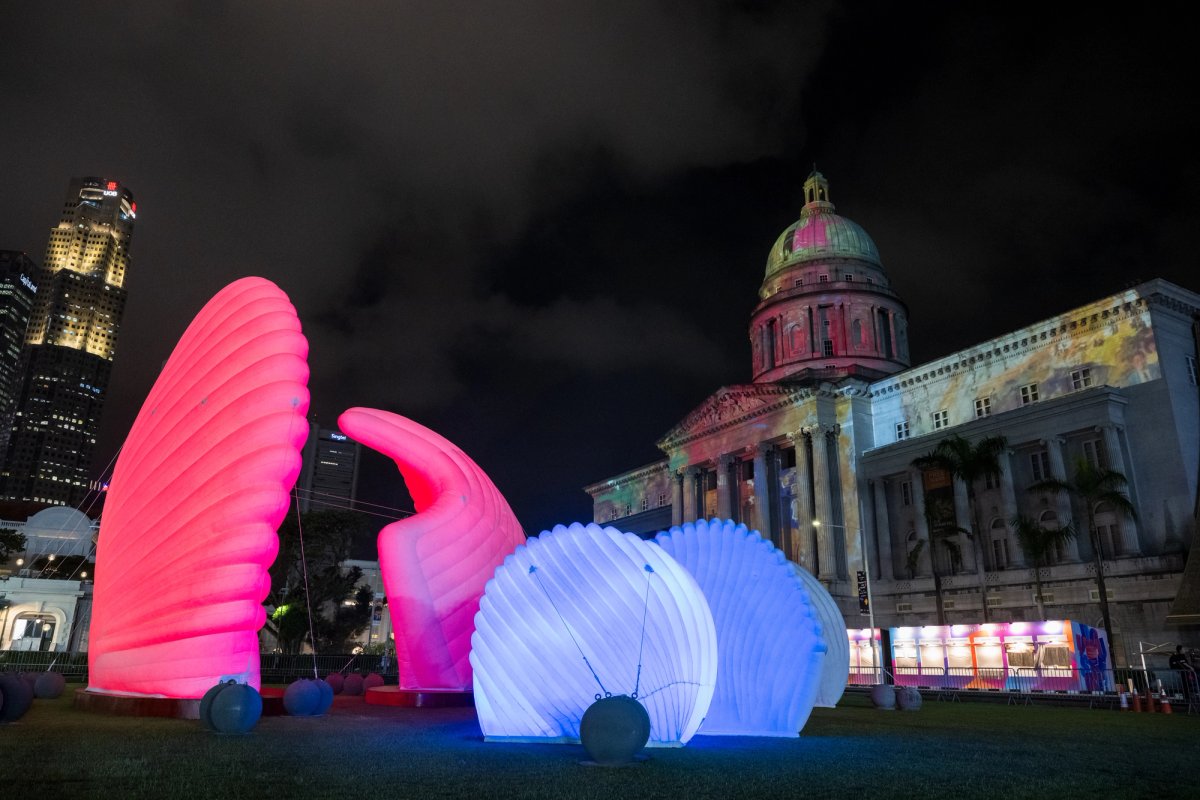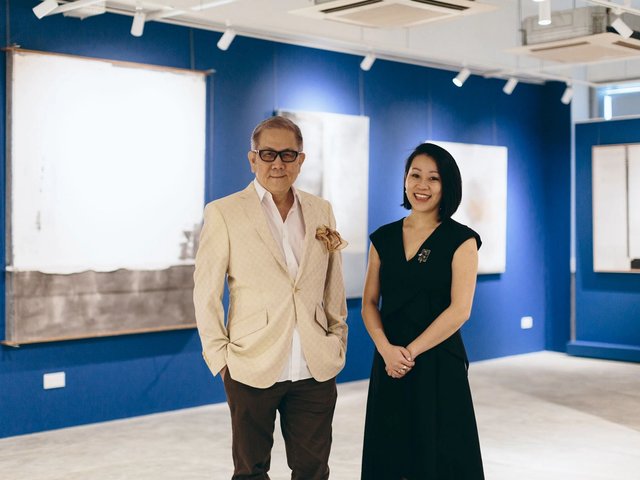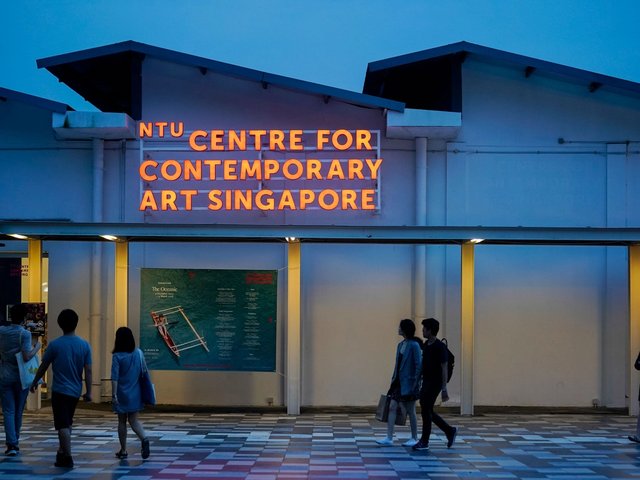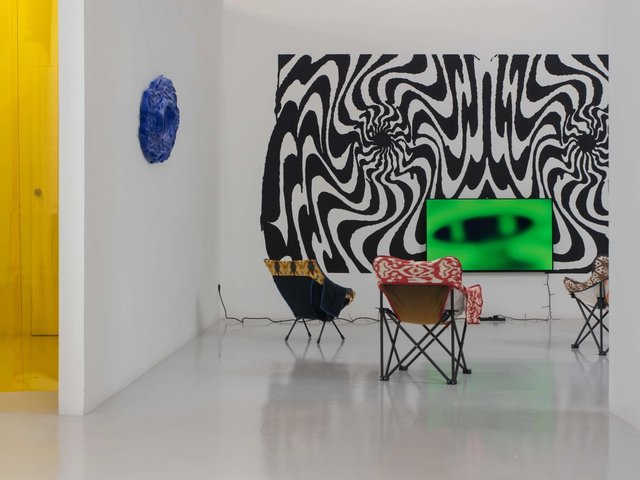Singapore Art Week (17-26 January) brings together over 160 events for the city's biggest celebration of the visual arts. Read our special supplement here
Singapore Art Week (SAW) returns bigger than ever for its 13th edition this year. More than 160 events and exhibitions place a particular spotlight on celebrating the rising profile of the city-state’s own artists, as well as showcasing a diverse range of talents from around Southeast Asia.
“Singapore Art Week feels like a wonderful ‘family reunion’ for the art world in Singapore and Southeast Asia—a moment when the art-loving public, artists, collectors and art workers come together, reconnect and, often, plan for future collaborations,” says Karin Oen, the director of the Nanyang Technological University Centre for Contemporary Art (NTU CCA). “SAW 2025 will be a good mix of everything including exhibitions and art fairs, performances and discursive programmes. It is important that these different aspects of the art world overlap and intersect with one another.”

The immersive installation Singkarpor REMIXED by AikBeing Chia features large-scale collages made from the photographs he takes around the city (Art Outreach Singapore, until 26 January) Photo: AikBeng Chia, ‘Singkarpor REMIXED’ as part of SAW 2025
“I think it is crucial that Singapore Art Week exists: it plays an important role as in many ways it anchors regional excitement for an awareness of art,” says Richard Koh, the founder of Richard Koh Fine Art (RKFA), which has locations in Singapore’s Gillman Barracks as well as in Bangkok. Koh says most of the art world in those cities say they “have SAW pencilled in every year, and more of the younger audiences [there] are now aware of it and are looking forward to it. SAW acts as an important gathering place for all the players from Southeast Asia.”
Koh’s own collection show at Singapore’s The Private Museum, Of Dreams and Contemplation: I Am All but a Story (until 9 March) is among the week’s top draws. The 33 works acquired over Koh’s two decades of dealing and collecting Southeast Asian art include artists like Agus Suwage and Ben Puah. Koh also will be showing The Squares, by Myanmar husband-and-wife Tun Win Aung and Wah Nu at his Singapore gallery (until 15 February). Curated by Louis Ho, the exhibition delves into three decades of personal and political history. At the art fair S.E.A. Focus (18-26 January), RKFA is presenting the Thai artist Natee Utarit, who “has created a special set of works called The Strange World of The Super Unknown with an interesting take on post-colonial issues”.
Myanmar artists also are among the voices featured at the 20-artist, mostly Southeast Asian group show Everyday Practices (until 20 July) at Singapore Art Museum (SAM), part of a busy line-up at its Tanjong Pagar Distripark location, along with solo shows of Thailand’s Pratchaya Phinthong and Malaysia’s Yee I-Lann (both until 23 March) and of Singapore’s Robert Zhao Renhui (until 18 May).
“I-Lann’s art has transcended politics, geography and all kinds of hardship to land softly in museums, galleries, biennales and homes,” says Rachel Rillo, the co-director of Silverlens Gallery, which represents Yee. “Her art also lands, and stays, in your subconscious. Once you are in I-Lann’s orbit, you want to stay. Seeing her work celebrated in Singapore Art Museum is both inspiring and affirming, not just for us at Silverlens but for the entire Southeast Asian art community.”
Reflecting migrant identities
Silverlens, founded in Manila and with a location in New York, also will join S.E.A. Focus, presenting the Philippines diaspora artists Pacita Abad and her nephew Pio Abad. The latter’s recent Turner Prize nomination “spotlights his examination of personal and political entanglements of and within objects.” The late Pacita Abad, who featured prominently in last year’s Venice Biennale, has been the subject of a touring show in North America, currently at the Art Gallery of Ontario (until 19 January). Both artists, says Rillo, “share a migrant identity, with Pacita’s work reflecting the universal connections she forged across the many cities, countries and cultures she’s lived in. Pacita’s last stop was Singapore, and we are proud to be showing works that she made here during her STPI [Workshop and Gallery] residency. A celebration of [her] life!”
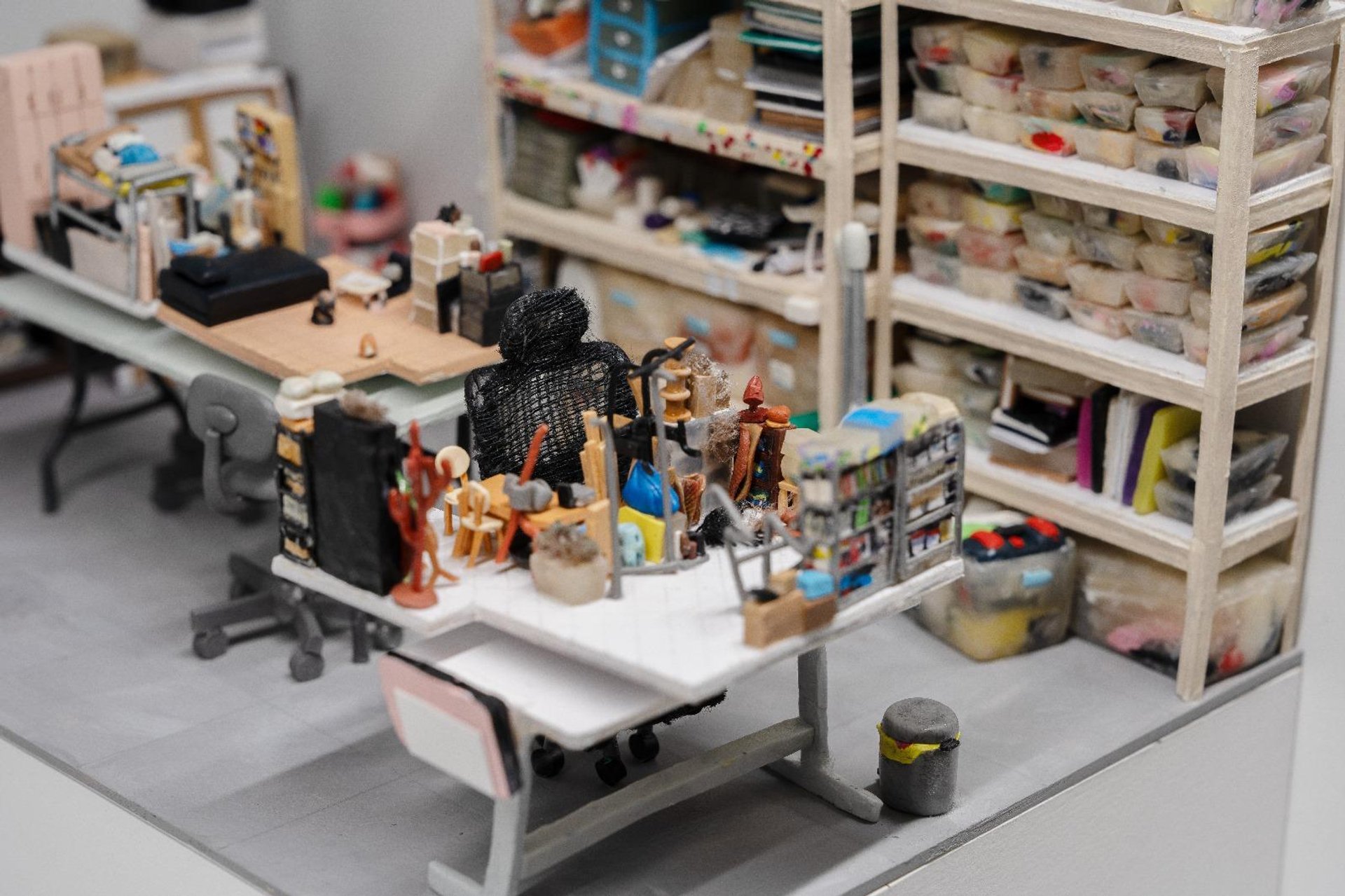
Con-Temporary Art is a miniature nomadic gallery that will pop up in different places during Singapore Art Week Photo: courtesy the artists
Diaspora and local Singaporean artists take centre stage at National Gallery Singapore (NGS) with solo shows by Kim Lim and Teo Eng Seng (both until 2 February). Teo’s five decades of found object and fabric sculpture in the local scene are presented in Teo Eng Seng: We’re Happy. Are You Happy?. The late Lim emigrated to the UK as a teen, but remained connected to her native land. “Kim Lim’s remarkable career and contributions as an artist from Singapore is a story that should be known and celebrated by our audiences here, and the exhibition is a fitting showcase for SAW 2025,” says Adele Tan, the senior curator at NGS, who co-organised with Joleen Loh the exhibition Kim Lim: The Space Between: A Retrospective.
“Being ‘female and foreign’ in the British art world in the second half of the 20th century did not impede her development and confidence in her own sculptural and printmaking language,” Tan says. “She was in step with the international art trends, but she also brought difference—a cosmopolitan sensibility from Singapore, and the incorporation of elements gleaned from her travels across Europe and the Asia-Pacific.”
Tan says the exhibition has “garnered much attention and enthusiasm, especially since this is the biggest retrospective to date of Kim Lim’s oeuvre”. NGS worked closely with Lim’s estate, incorporating her personal archives. “The art world has been rediscovering brilliant modern female artists in recent years and this exhibition is our participation in this very necessary work and conversation.”
NTU CCA will stage the exhibition Techno Diversions: Nothing has to be the way it is (until 26 January) at its Gillman Barracks space. Inspired by the Ursula K. Le Guin essay of the same title, the show presents projects by local artists Chok Si Xuan, bani haykal and Ong Kian Peng, curated by the centre’s Anna Lovecchio. It “interlaces artistic research, transdisciplinary encounters and the formation of communities around shared interests to propel transformative understandings of technology”, questioning “the escalation of technological sovereignty and, ultimately, the role of technology in our lives”, says the centre’s director, Karin Oen. She adds that she is also looking forward to the NTU Museum exhibition Construction in Every Corner (until 17 April) featuring works by Sarah Choo Jing, Matthias Choo, Debbie Ding and Marvin Tang.
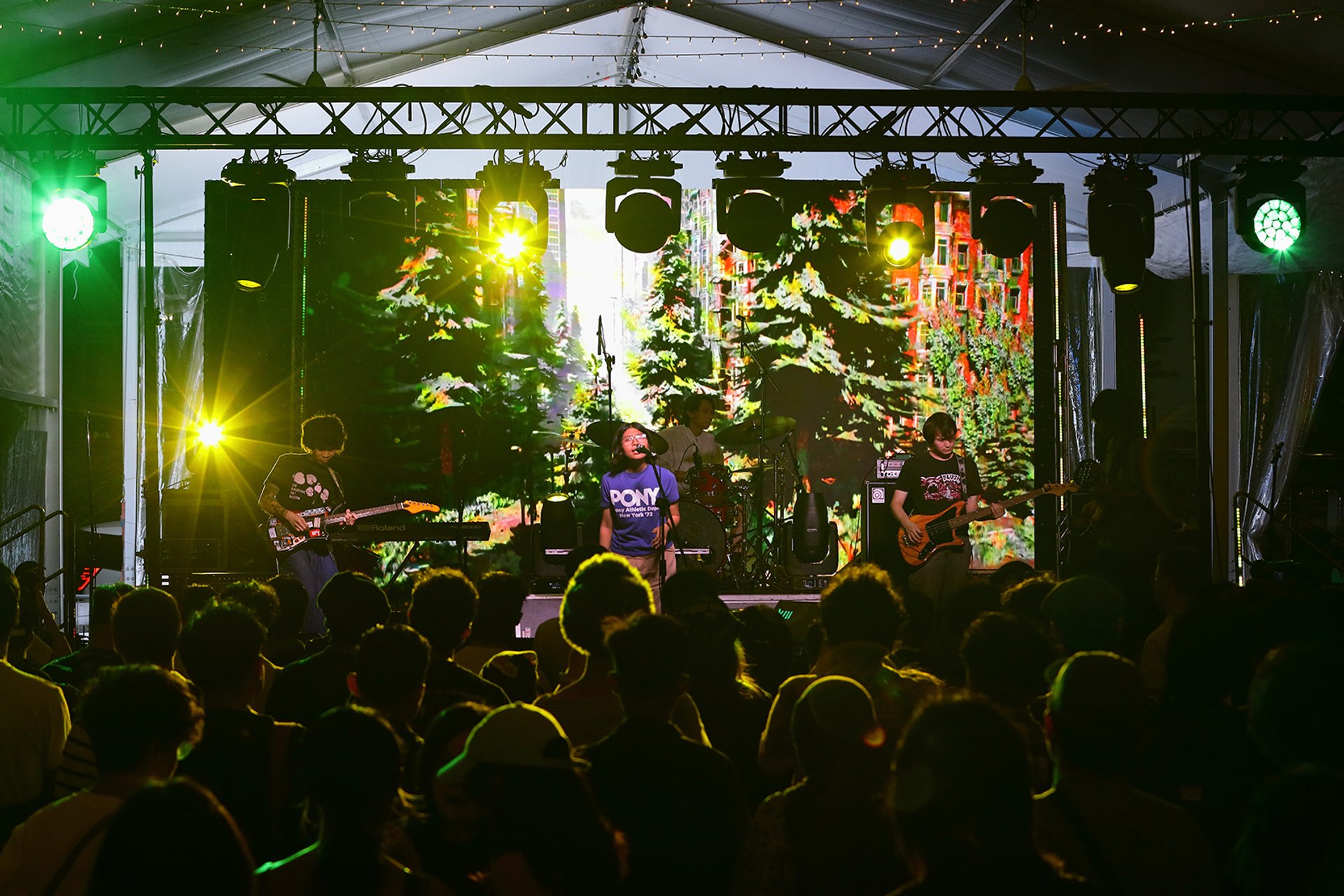
Subsonic Eye performing at the Sonic Sessions at Singapore Art Museum (17, 18 and 24, 25 January)
This year’s SAW may pull in a particularly strong cohort of Southeast Asian collectors, Koh predicts, as well broader arts audiences. “I’m looking forward to meet the many international artists coming this year like Theaster Gates, Mandy El-Sayegh, Gala Porras Kim, Arin Rungjang and Korakrit Arunanondchai,” says Andreas Teoh, the co-founder and chairperson of the Singapore-based curatorial workshop The Institutum. This year the non-profit organised an “immersive art dinner” The Politics of Food: Origin Stories before the beginning of SAW, curated by Clara Che Wei Pei (see p8 for her SAW highlights) and Aaron Cezar, the Delfina Foundation’s founding director. It also will hold a symposium at ART SG (on 17 January), looking at the shifting landscape of art patronage and exploring new models of support and art’s role in building resilient cities.
“This year’s SAW seems to be more weighted towards symposiums and thought leadership,” says Teoh, with NGS, SAM and NAC, the Tanoto Art Foundation and Art Outreach Basecamp all hosting events. “ART SG’s third edition also promises to be interesting with a great film and talks programme.”
Animation and illumination
The week also includes crowd-pleasers like a Studio Ghibli show at Art Science Museum (until 2 February), and the annual favourite the Light to Night Festival (17 January-6 February), this year with a project by Kray Chen. Stephanie Fong, the director of Singapore gallery FOST, which will be showing Chen in a mostly Singaporean group stand at ART SG, is eager to see Chen’s project on The Arts House lawn. “A Little Bead of Work invites visitors to string words together on bracelets using glow-in-the-dark alphabet beads, encouraging reflection on how words and connections take shape, grow, and extend beyond physical space,” Fong says.
Showing Malaysian artist Grace Tan’s geometric fabric works in A Cube is a Cube is a Cube at the gallery space, FOST will also bring Tan and three other Singaporean women artists to S.E.A. Focus. Fong says SAW is “the highlight of the arts calendar in Singapore and, dare I say, Southeast Asia, and opens the year for everyone with a bang”.
“Singapore has a special position with a great opportunity to be the beacon of Southeast Asian art and presenting it to the rest of the world,” says Teoh. Recent editions have brought “more and more important institutional interest in the artists, institutions and collectors of this region and with the correct elements, [it] will elevate regional art to a global platform.”
The art week “has evolved to have an island-wide presence”, including students and faculty who find inclusion as “artists, art workers, volunteers and members of the culturally curious public,” Oen says. “Even during the years of social distancing during the Covid-19 pandemic, Singapore’s intrepid arts institutions and galleries found a way to carry on and bring interesting exhibitions and cultural experiences to the public… SAW is unstoppable!”


